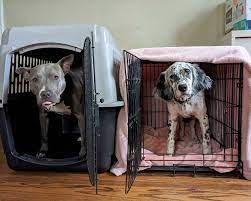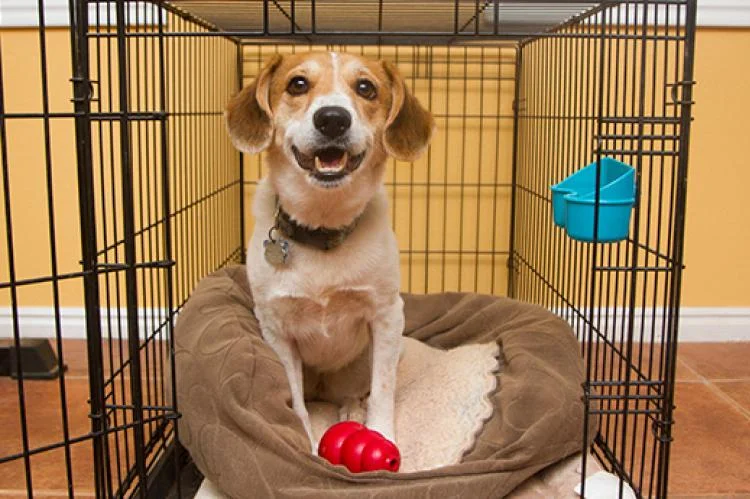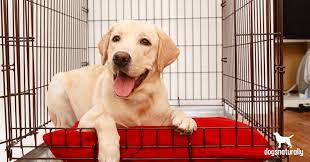
Welcoming Your Dog to Their New Haven: The Significance of a Dog House
The introduction of a dog house into a pet’s life is more than just providing a physical shelter; it’s about creating a safe, comfortable haven that they can call their own. In this chapter, we explore the importance of a dog house in a canine’s life, its benefits, and how to gauge whether your dog will take to this new space. We’ll also lay the groundwork for training your dog to not just use, but genuinely enjoy their personal retreat.
The Role and Benefits of a Dog House
A dog house serves multiple purposes. It offers a dog a sense of security and privacy, a place where they can retreat to rest or when they feel overwhelmed. Especially for outdoor dogs, it provides essential protection from the elements, be it harsh sun, wind, or rain. But beyond these practicalities, a dog house can become a comforting sanctuary, a space where your dog feels completely at ease.
Identifying Your Dog’s Affinity for a Dog House
Not all dogs may immediately take to a dog house, and their acceptance can depend on various factors such as breed, age, past experiences, and personality. Some dogs may instinctively understand the purpose of the dog house, while others may need more encouragement and training to use it.
Training Your Dog to Love Their Dog House
Training your dog to use and enjoy their dog house is a process that requires patience, understanding, and the right approach. The subsequent chapters will delve into effective training techniques, from making the dog house inviting and comfortable to using positive reinforcement to encourage your dog to spend time in it.

Assessing Your Dog’s Needs and Preferences
Factors to Consider for a Dog House
Deciding whether your dog will like a dog house involves considering several factors. The first step is to observe your dog’s current behaviors and preferences. Do they seek out small, enclosed spaces for rest, or do they prefer open areas? Consider also the climate you live in; dogs in colder climates may appreciate the shelter of a dog house more than those in warmer areas. Additionally, think about the placement of the dog house. It should be in a location that the dog feels comfortable with, not too isolated from the family, and in an area that provides the right amount of sun and shade.
Influence of Breed, Size, Age, and Personality A dog’s breed, size, age, and personality significantly influence their preference for shelter. For instance, larger breeds or those with thick fur might prefer cooler, open spaces, while smaller breeds or those with short coats might seek out warmer, enclosed areas. Age is also a factor; older dogs might need more protection from extreme weather conditions. Additionally, every dog has a unique personality; some might be more adventurous and enjoy spending time outdoors, while others may be more reserved and prefer staying indoors.
Observing Behavior and Comfort in Different Weather Conditions Observing your dog’s behavior in different weather conditions is key to understanding their shelter preferences. Notice if they seek out shade on sunny days or a warm spot during colder times. Do they enjoy lying in the sun or do they retreat to cooler, shaded areas? Their behavior can give you valuable insights into the type of shelter they would prefer. Pay attention to signs of discomfort, like excessive panting in the heat or reluctance to go outside in the cold, as these can indicate their need for a more suitable shelter option.
Choosing the Right Dog House
Selecting an Appropriate Dog House
When it comes to providing comfort and shelter for your dog, selecting the right dog house is crucial. The size of the dog house is paramount; it should be large enough for your dog to stand, turn around, and lie down comfortably, but not too large as to lose heat retention. The materials used in constructing the dog house also matter significantly. Look for durable, weather-resistant materials like treated wood or heavy-duty plastic. The design of the dog house should include a raised floor to prevent dampness and a sloped roof to divert rain. Additionally, ensure that the entrance is appropriately sized – big enough for your dog to enter easily but small enough to retain heat.
Importance of the Dog House’s Location
The location of the dog house greatly affects your dog’s willingness to use it. It should be placed in a sheltered area to protect it from extreme weather conditions, like direct sunlight, wind, and heavy rain. Ideally, it should be positioned in a way that the entrance faces away from prevailing winds and is accessible yet quiet, to provide a sense of security and peace. Avoid placing the dog house in low-lying areas where water might collect. The right location can make the difference between the dog house being a safe haven or an uncomfortable spot for your pet.
Ensuring Proper Insulation and Ventilation
Proper insulation and ventilation in a dog house are essential for your dog’s health and comfort. Insulation is crucial, especially in colder climates, to keep your dog warm. This can be achieved through insulated panels or by lining the walls with insulating materials. However, avoid materials that can be chewed or ingested. Ventilation is equally important to prevent condensation and ensure fresh air circulation, especially in warmer months. Make sure the dog house has vents or a slightly ajar door to allow air to flow in and out, maintaining a comfortable temperature and air quality inside.

Creating a Positive Association
Guiding Your Dog to Embrace the Dog House with Positive Experiences
The key to encouraging a dog to use and enjoy their dog house lies in creating positive associations with it. This chapter outlines techniques for introducing your dog to the dog house gradually, utilizing positive reinforcement, and ensuring the process is stress-free and enjoyable for your canine companion.
Gradual Introduction to the Dog House
Familiarization: Begin by allowing your dog to explore the dog house at their own pace. Place it in a familiar area where they spend a lot of time. Let them sniff around and investigate it without any pressure to go inside.
Making It Inviting: Ensure the dog house is comfortable and inviting. Add a favorite blanket or a piece of your clothing inside to make it smell familiar and comforting.
Short, Positive Sessions: Start with short sessions near the dog house. Encourage your dog to approach it, and reward them for any interest shown, even if they don’t go inside immediately.
Utilizing Positive Reinforcement
Treats and Toys: Use treats or their favorite toys to lure them into the dog house. Place them at the entrance initially, and gradually move them inside as your dog becomes more comfortable.
Verbal Cues and Praise: Use a cheerful, encouraging tone when they approach or enter the dog house. Pair this with a specific command like “go to your house.” Praise them and give them a treat every time they respond positively.
Meal Times: Consider feeding your dog their meals near or inside the dog house to create a positive association with being in or around it.
The Importance of Patience and Calm
Avoid Rushing: It’s important not to rush the process. Forcing a dog into the dog house can create negative associations.
Observe Your Dog’s Comfort Level: Pay close attention to your dog’s body language. If they seem stressed or hesitant, take a break and try again later.
Consistency Is Key: Consistent, positive interactions with the dog house over time will gradually build your dog’s comfort and trust in it as a safe space.
Building Comfort and Trust
Making the Dog House Comfortable
The comfort of your dog inside the dog house is paramount. Start by selecting the right bedding or a soft mat that suits your dog’s size and preferences. The bedding should be comfortable for lying down and sturdy enough to withstand wear and tear. Consider using materials that are easy to clean and maintain. The inside of the dog house should be cozy but not cramped, allowing your dog to stand up, turn around, and lie down comfortably. In colder climates, ensure the bedding provides sufficient warmth, and in warmer regions, opt for materials that stay cool.
Building Trust with Quality Time Spending quality time with your dog near the dog house is a great way to build trust and help them acclimate to the new space. Sit near the dog house while engaging in calm, soothing interactions, like petting or talking gently. This shows your dog that the dog house is a safe space. You can gradually encourage them to explore and enter the dog house on their own, but avoid forcing them, as this could create negative associations.
Creating Positive Associations with Playtime and Feeding Incorporating playtime and feeding near the dog house can create positive associations for your dog. Start by placing their favorite toys around and eventually inside the dog house. Engage in playful activities near the dog house, gradually moving these activities closer to and inside it. Similarly, feeding your dog near the dog house can reinforce a positive connection. Begin by placing their food bowl near the entrance and slowly move it inside over time. This gradual approach helps in building a comfortable and trusting relationship between your dog and their new shelter.
Training Your Dog to Use the Dog House
Step-by-Step Training Plan
Training your dog to use a dog house requires patience and a step-by-step approach:
Initial Introduction: Start by letting your dog explore the dog house at their own pace. Place it in an area where they spend a lot of time. Encourage exploration by placing treats or their favorite toys near and eventually inside the dog house.
Creating Positive Associations: Spend time near the dog house, showing your dog that it’s a safe space. You can feed them near the dog house initially, gradually moving their food bowl inside.
Short Stays: Once your dog is comfortable going into the house, encourage them to stay inside for short periods. Sit nearby and continue to offer treats and praise.
Gradual Increase in Duration: Gradually increase the time your dog spends in the house. Start with a few minutes and extend to longer periods. Ensure they’re comfortable and not showing signs of stress.
Overnight Stays: When your dog is comfortable with extended stays, encourage overnight sleeping. Place a familiar blanket or bed inside to make it more inviting.
Using the Dog House in Inclement Weather
To get your dog to use the dog house during bad weather, start by creating positive experiences. During mild weather, encourage your dog to spend time in the house. This familiarity helps them seek it out when the weather turns. Always offer praise and maybe a special treat for using the dog house in these conditions.
The Role of Positive Reinforcement
Positive reinforcement is key. This means rewarding your dog for any interaction with the dog house – entering it, staying inside, or even just showing interest. Use treats, affection, and verbal praise. This positive association makes the dog house a rewarding place to be.
Overcoming Common Challenges
Anxiety or Hesitation: If your dog is anxious or hesitant, don’t force them into the dog house. This could create negative associations. Instead, take a step back and move at a pace comfortable for your dog.
Distraction Techniques: If your dog is easily distracted and loses interest, try using more enticing treats or toys. Make the dog house the most exciting place to be.
Comfort and Familiarity: Ensure the dog house is comfortable. Familiar scents, like a blanket they often use, can make the dog house feel more inviting.
Conclusion: Embracing the Journey to a Happy, Homely Space for Your Dog
As we conclude our guide on training your dog to use and love their dog house, it’s important to reflect on the key takeaways and the broader implications of what we’ve covered. This journey isn’t just about a physical structure; it’s about enhancing the quality of life for your furry friend through responsible pet ownership and understanding.
Key Takeaways
Gradual Introduction and Familiarization: Introducing your dog to the dog house should be a gradual process. Allowing them to explore and become familiar with it at their own pace is crucial.
Creating Positive Associations: Use positive reinforcement techniques, such as treats, toys, and verbal praise, to make the dog house an appealing place for your dog. Consistently rewarding them for spending time there helps build positive associations.
Patience and Observation: It’s essential to be patient and observe your dog’s reactions. Not all dogs will immediately take to a dog house, and that’s okay. Tailor your approach based on your dog’s comfort level and preferences.
Comfort and Safety: Ensure the dog house is comfortable, safe, and situated in a suitable location. Making it feel like a secure and cozy retreat is key to its acceptance.
The Importance of Responsible Pet Ownership
Providing a safe and comfortable shelter is a fundamental aspect of responsible pet ownership. A dog house offers a personal space for your dog to feel secure, especially when spending time outdoors. It’s a commitment to your dog’s well-being, ensuring they have a space where they can retreat and relax in comfort.
The Rewards of Successful Training
Successfully training your dog to use and love their dog house is incredibly rewarding. It strengthens the bond between you and your pet, as it’s a testament to your understanding, patience, and commitment to their happiness. Watching your dog enjoy and utilize their own space is not only a joy but also a reassurance that they feel safe, loved, and at home.
Final Thoughts
Training your dog to love their dog house is a valuable and fulfilling endeavor. It’s about providing more than just a physical shelter; it’s about offering a haven of comfort and security. As you embark on this journey, remember that the effort and time you invest in this process reflect your love and commitment to your furry companion’s happiness and well-being.
